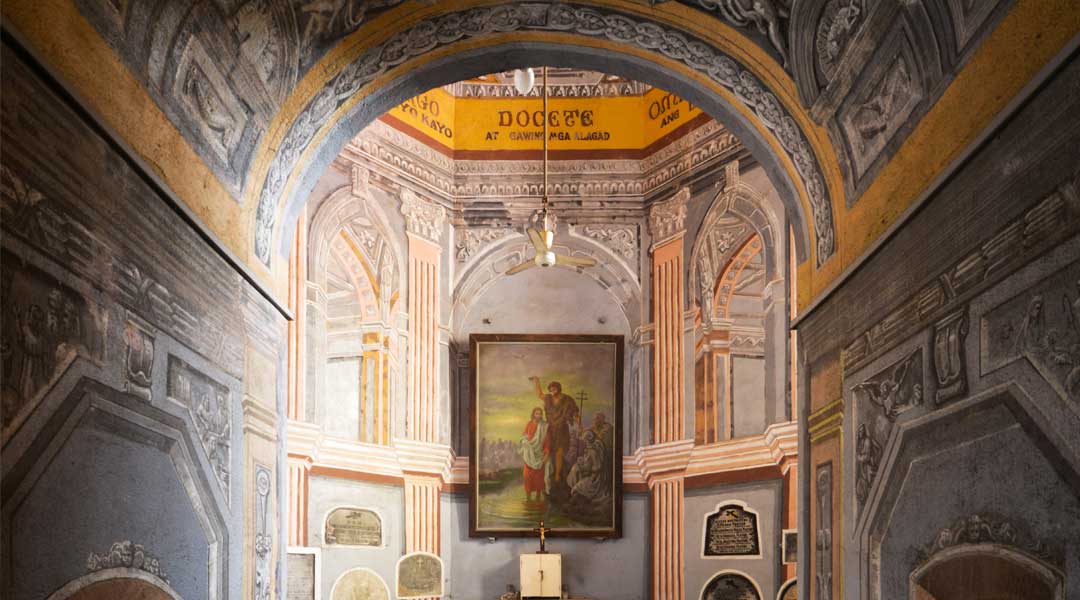
Sculpted illusions at the Basilica Minor of Immaculate Conception in Batangas
The earliest ones are dated 1876, 1882, 1895 and 1898; all in one group near the narthex or lobby of the church, along the right aisle facing the altar. There could be earlier ones, but it is impossible to tell just by looking. Some of the headstones are so worn, their engravings are erased and surfaces completely smooth from over a century of the faithful of Batangas City and nearby towns filing in and out of their beloved basilica.
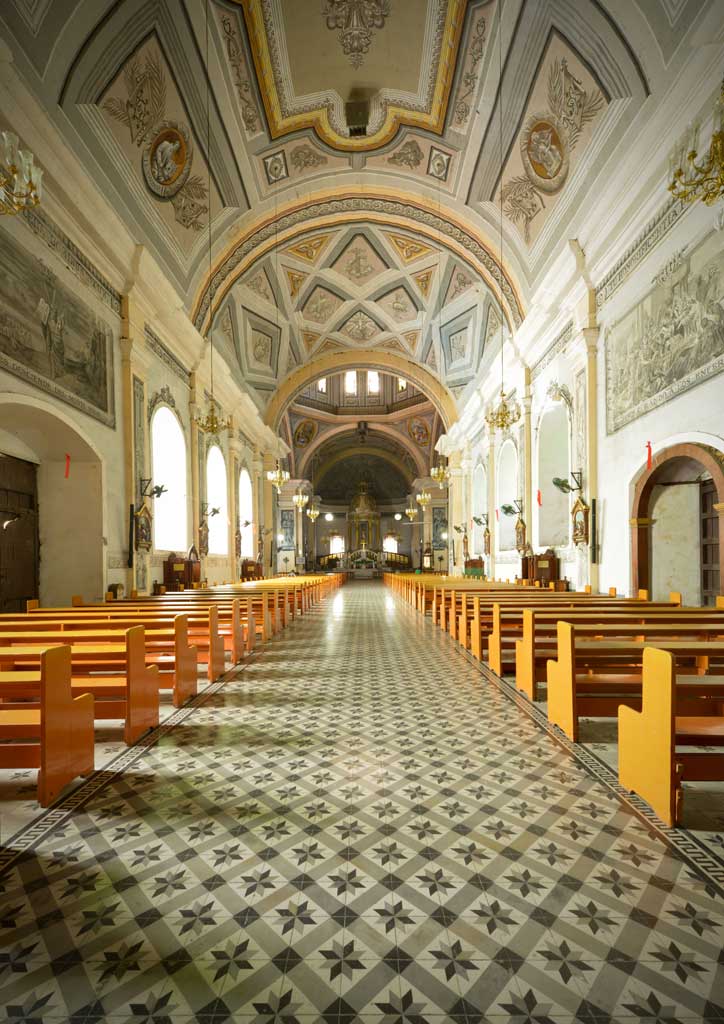
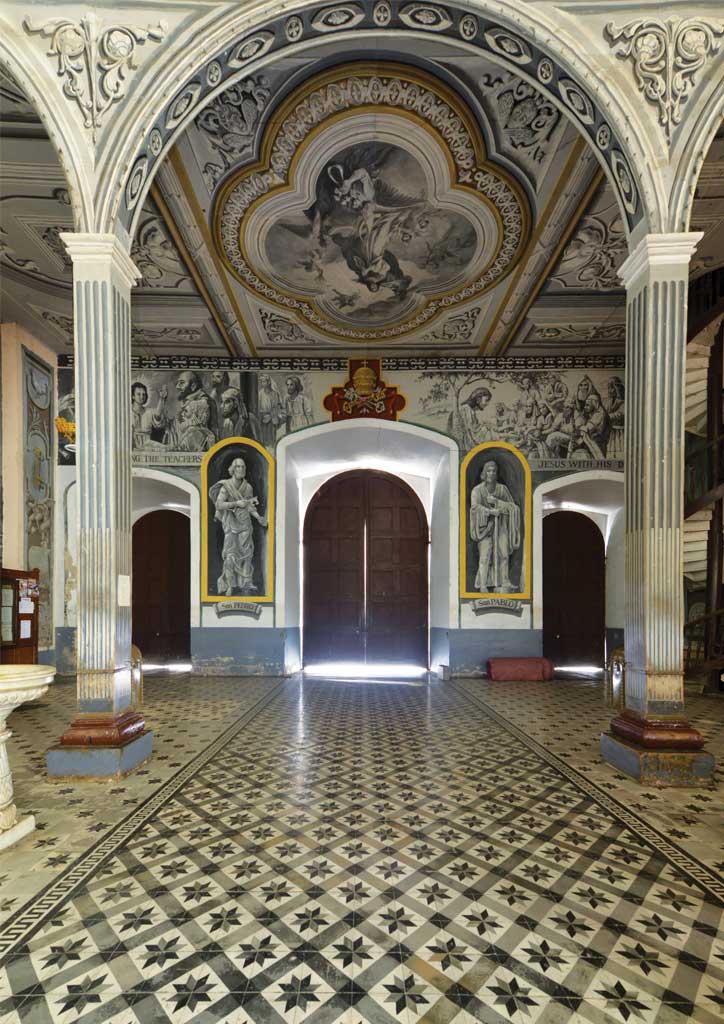
The Basilica Menor de Inmaculada Concepción is 156 years old, but the first church that stood on its site was erected 432 years ago in 1581 by an Augustinian priest, Padre Diego Mojica. Dedicated to Inmaculada Concepción de Nuestra Señora, the first structure was made of wood. Then, a large and fortified church complex was built on the site over the course of four decades, from 1682-1721, with a high watchtower and artileriya added to the convento in 1693, to espy and repel sea bandits.
According to several sources, including the marker outside the basilica, the second church was torn down, and a third church began construction in the mid-1800s. No reasons are given for why the second church had to be demolished, but it is likely that it had been severely compromised by two destructive earthquakes that happened in 1852, on September 16 and December 24.
READ MORE: A Fitting Retrofit: The Restoration of Manila Cathedral
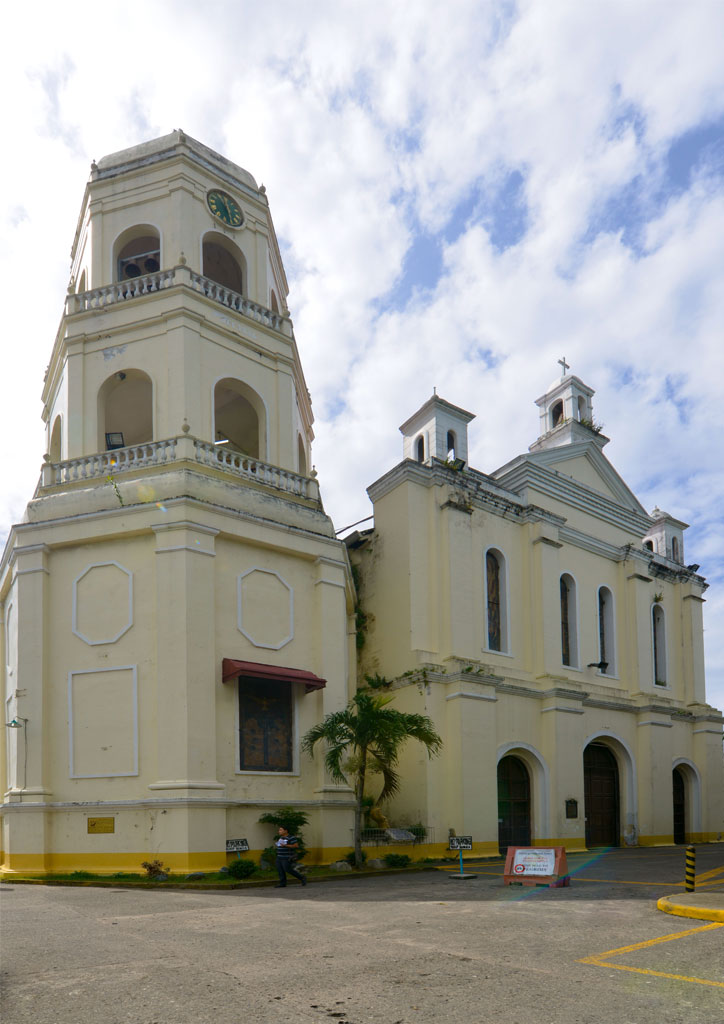
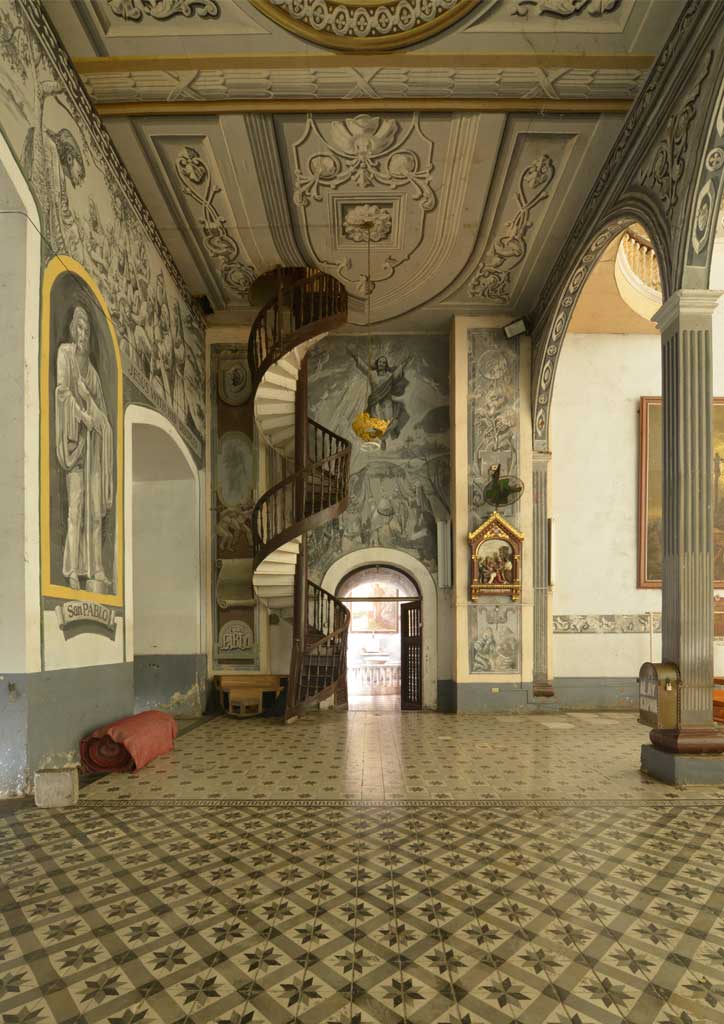
According to the Catalogue of Violent and Destructive Earthquakes in the Philippines by Miguel Saderra Masó, SJ, (1910), the first earthquake caused great landslides and many fissures to open in the provinces of Bataan, Cavite and Batangas, while the second one “ruined many buildings, among which were the church of Taal, the church and convento of Bauang; the church of Batangas likewise suffered severely.” Both earthquakes measured 9 (with the highest being 10) on the De Rossi-Ferrol scale, and have been described as “devastating, causing great to total destruction of buildings.”
The third church, the present one, is a picture of solidity and stability, its walls a meter and a half thick, supported by three massive buttresses on each side. It was consecrated on February 2, 1857, and on February 13, 1948, by a decree of the Pope Pious XII, was elevated to the status of “Basilica Minor,” the first church in the Philippines and East Asia to be so honored.
READ MORE: God, Man, Nature: Amara Chapel by Buensalido+Architects
Considering the prominence of the city and the significance of the basilica, and that it was common practice to bury important townsfolk within church walls, it is surprising that there aren’t many more headstones to be found. There are less than 50, most of them lining the walls of the baptistery, an octagonal-shaped room housed within the belfry tower adjacent to the church. The headstones or niche covers in the baptistery are more recent than the ones in the church proper. Save for one, all who are buried here died in the early1900s, with several dated 1944, during the Japanese occupation of the city in World War II. There are niche covers with bas-reliefs skillfully carved out of marble and ordered from Manila, as attested by small inscriptions that read: Vergara Marble Works, Manila, and Manila Marble.
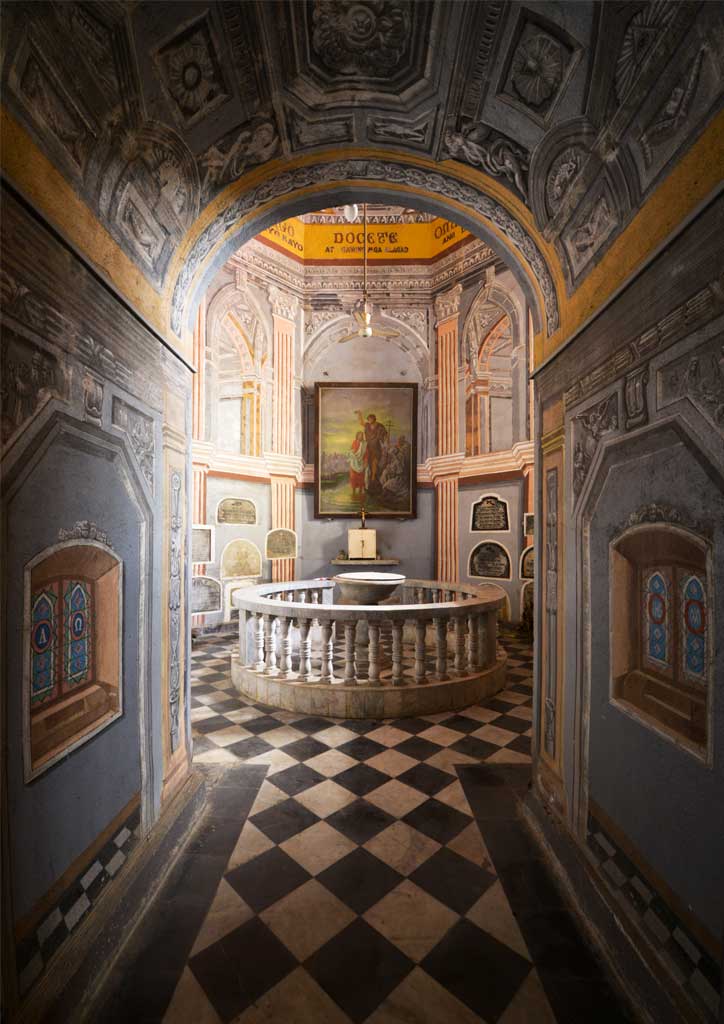
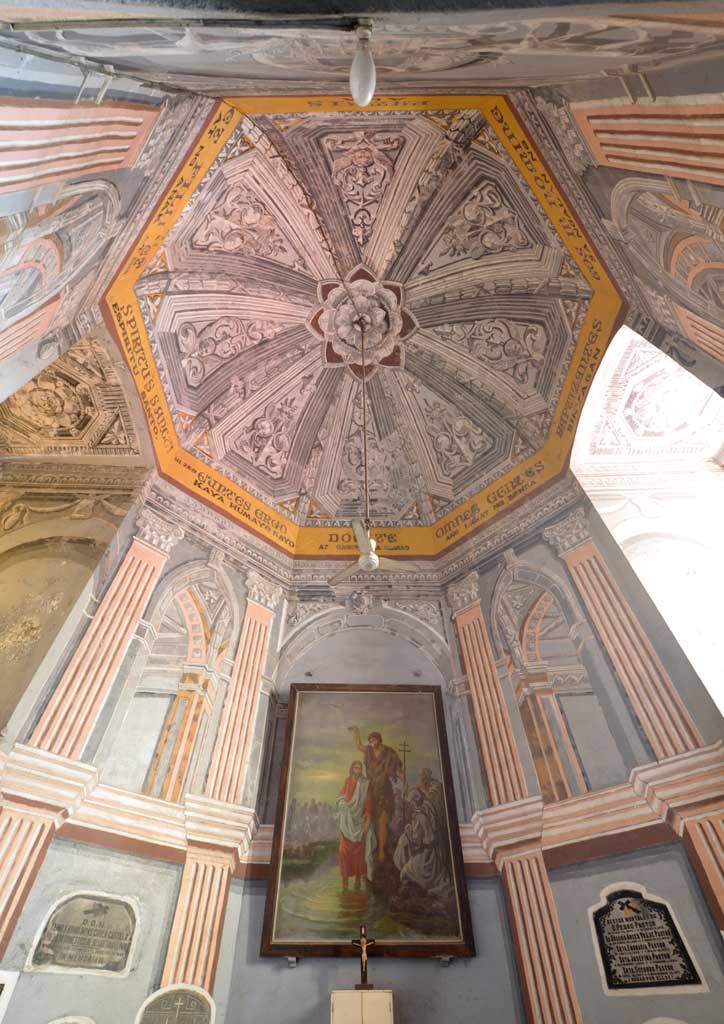
The eight-sided shape of traditional baptisteries symbolizes the eighth day, or the first day of a new week, the first day of a new creation or of resurrection. Although traditionally, baptisteries were intended to symbolize the tomb of the risen Christ, it was not customary to entomb the dead in this part of the church grounds, making the Basilica Minor of the Immaculate Conception one of the few in the world where this was done. Why did the stewards of the basilica decide to do this? It is an interesting story worthy of being chased.
For now, for me, it is food for reflection on the brevity of life on this earth, and the promise of life everlasting. Here, families gather to welcome the next generation into the greater family of the church, encircled by memorials to those who have come and gone before. It is the union of the body of Christ, past, present and expectant. ![]()
This article first appeared in BluPrint Vol 1 2014. Edits were made for Bluprint.ph.


